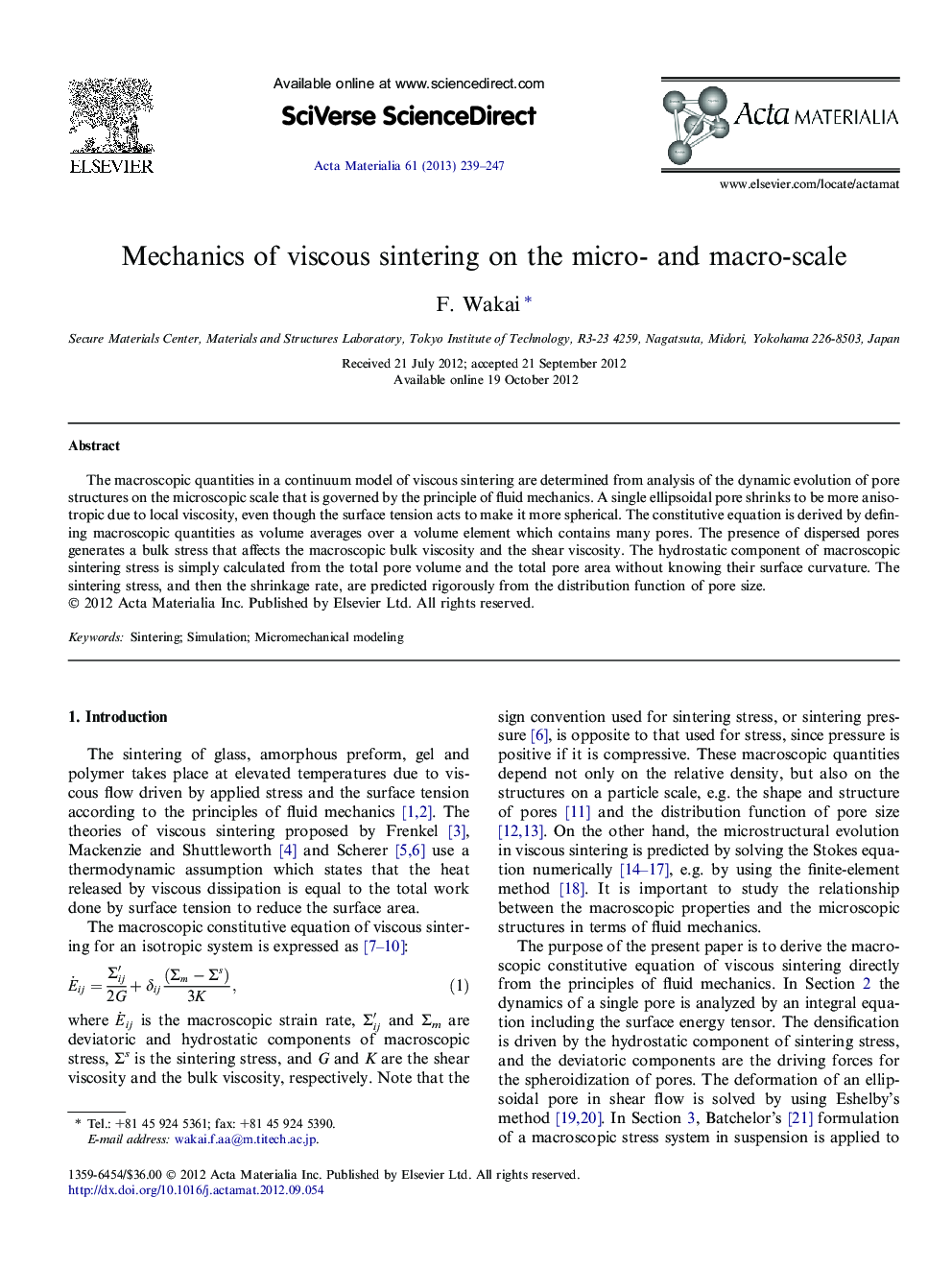| Article ID | Journal | Published Year | Pages | File Type |
|---|---|---|---|---|
| 10620323 | Acta Materialia | 2013 | 9 Pages |
Abstract
The macroscopic quantities in a continuum model of viscous sintering are determined from analysis of the dynamic evolution of pore structures on the microscopic scale that is governed by the principle of fluid mechanics. A single ellipsoidal pore shrinks to be more anisotropic due to local viscosity, even though the surface tension acts to make it more spherical. The constitutive equation is derived by defining macroscopic quantities as volume averages over a volume element which contains many pores. The presence of dispersed pores generates a bulk stress that affects the macroscopic bulk viscosity and the shear viscosity. The hydrostatic component of macroscopic sintering stress is simply calculated from the total pore volume and the total pore area without knowing their surface curvature. The sintering stress, and then the shrinkage rate, are predicted rigorously from the distribution function of pore size.
Related Topics
Physical Sciences and Engineering
Materials Science
Ceramics and Composites
Authors
F. Wakai,
